I'm trying to overlay some TextVisuals over my scene, but I'm having trouble getting everything to show properly. Here is my code which is slightlty modified from the vispy example here
import numpy as np
from vispy import app, gloo, visuals
from vispy.gloo import Program, VertexBuffer, IndexBuffer
from vispy.util.transforms import perspective, translate, rotate
from vispy.geometry import create_cube
vertex = """
uniform mat4 model;
uniform mat4 view;
uniform mat4 projection;
attribute vec3 position;
attribute vec2 texcoord;
attribute vec3 normal;
attribute vec4 color;
varying vec4 v_color;
void main()
{
v_color = color;
gl_Position = projection * view * model * vec4(position,1.0);
}
"""
fragment = """
varying vec4 v_color;
void main()
{
gl_FragColor = v_color;
}
"""
vertexcb = """
attribute vec2 position;
void main()
{
gl_Position = vec4(position, 0.0, 1.0);
}
"""
fragmentcb = """
uniform vec2 screen;
void main()
{
float color = (gl_FragCoord.x-0.1*screen.x)/(0.8*screen.x);
gl_FragColor = vec4(0.0416+max(min(2.625106*color,0.9584),0),max(min(2.624996*color-0.958331,1),0),0.1+max(min(3.937504*color-2.937504,0.9),0),0);
}
"""
class Canvas(app.Canvas):
def __init__(self):
app.Canvas.__init__(self, size=(800, 600), title='Colored cube',
keys='interactive')
# Build cube data
V, I, _ = create_cube()
vertices = VertexBuffer(V)
self.indices = IndexBuffer(I)
# Build program
self.program = Program(vertex, fragment)
self.program.bind(vertices)
# Build view, model, projection & normal
view = translate((0, 0, -5))
model = np.eye(4, dtype=np.float32)
self.program['model'] = model
self.program['view'] = view
self.phi, self.theta = 0, 0
# Add colorbar
self.programcb = Program(vertexcb, fragmentcb)
self.programcb['screen'] = self.physical_size
self.programcb['position'] = [[-0.8, -0.8],[-0.8,-0.6],[0.8,-0.8],[0.8,-0.6]]
self.indicescb = IndexBuffer([[0,1,2],[1,2,3]])
# Add text
self.testText = visuals.TextVisual('Testy',pos=(20,20))
self.tr_sys = visuals.transforms.TransformSystem(self)
gloo.set_state(clear_color=(0.30, 0.30, 0.35, 1.00), depth_test=True)
self.activate_zoom()
self.timer = app.Timer('auto', self.on_timer, start=True)
self.show()
def on_draw(self, event):
gloo.clear(color=True, depth=True)
self.testText.draw(self.tr_sys) #draw text
self.program.draw('triangles', self.indices) #draw the cube
self.programcb.draw('triangles', self.indicescb) # draw the colorbar
def on_resize(self, event):
self.activate_zoom()
def activate_zoom(self):
gloo.set_viewport(0, 0, *self.physical_size)
self.programcb['screen'] = self.physical_size
projection = perspective(45.0, self.size[0] / float(self.size[1]),
2.0, 10.0)
self.program['projection'] = projection
def on_timer(self, event):
self.theta += .5
self.phi += .5
self.program['model'] = np.dot(rotate(self.theta, (0, 0, 1)),
rotate(self.phi, (0, 1, 0)))
self.update()
if __name__ == '__main__':
c = Canvas()
app.run()
This produces a scene with a rotating cube and text, but the colorbar is missing. In addition some faces of the cube show only the inside of that triangle. When I remove self.testText.draw(self.tr_sys) from on_draw method, both the colorbar and the cube show correctly. If I comment out the cube drawing and leave the colorbar and text drawing, I' only get the text.
What is happening here? Is the TransformSystem somehow changing the location of colorbar, in a way that VertexBuffer knows how to handle, so that the cube is still shown? The code is also much slower when both the text and the broken cube are showing, compared to the cube and colorbar. Is the text drawing changing some OpenGL settings which causes slowdowns?

